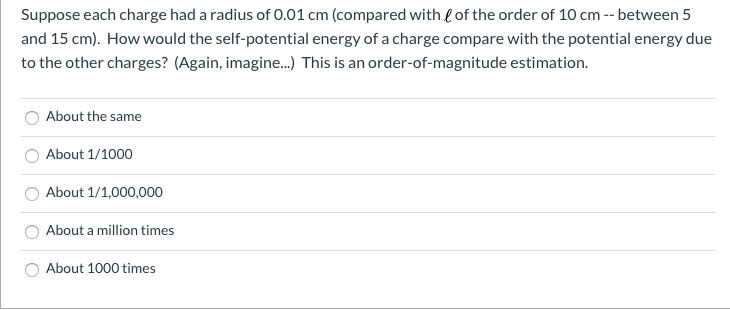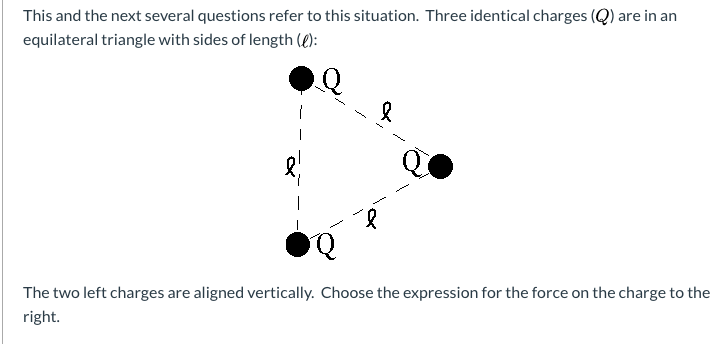Suppose each charge had a radius of 0.01 cm (compared with l of the order of 10 cm -- between 5 and 15 cm). How would the self-potential energy of a charge compare with the potential energy due to the other charges? (Again, imagine.) This is an order-of-magnitude estimation. About the same About 1/1000 About 1/1,000,000 About a million times About 1000 times This and the next several questions refer to this situation. Three identical charges (Q) are in an equilateral triangle with sides of length (): The two left charges are aligned vertically. Choose the expression for the force on the charge to the right.
Dielectric Constant Of Water
Water constitutes about 70% of earth. Some important distinguishing properties of water are high molar concentration, small dissociation constant and high dielectric constant.
Electrostatic Potential and Capacitance
An electrostatic force is a force caused by stationary electric charges /fields. The electrostatic force is caused by the transfer of electrons in conducting materials. Coulomb’s law determines the amount of force between two stationary, charged particles. The electric force is the force which acts between two stationary charges. It is also called Coulomb force.
Suppose each charge had a radius of 0.01 cm (compared with ℓ of the order of 10 cm -- between 5 and 15 cm). How would the self-potential energy of a charge compare with the potential energy due to the other charges? (Again, imagine...) This is an order-of-magnitude estimation.


Since you have asked multiple question, we will solve the first question for you. If you
want any specific question to be solved then please specify the question number or post
only that question.
The self-potential energy of a charged particle is inversely proportional to the radius of that charged particle. Mathematically, it can be expressed as:

The expression for the potential energy of a charged particle due to its neighbor charges will be:

Step by step
Solved in 4 steps with 3 images









